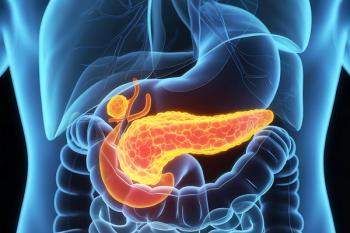
- The Column-02-12-2018
- Volume 14
- Issue 2
The 10th Conference of the World Mycotoxin Forum
The 10th conference of The World Mycotoxin Forum will take place in Amsterdam, the Netherlands, on 12–14 March 2018. This preview offers a glimpse of what can be expected.
The 10th conference of The World Mycotoxin Forum will take place in Amsterdam, the Netherlands, on 12–14 March 2018. This preview offers a glimpse of what can be expected.
Is a mycotoxin-free supply chain possible? The 10th conference of The World Mycotoxin Forum, which will be held in Beurs van Berlage, in Amsterdam, the Netherlands on 12–14 March 2018, aims to contribute to this ultimate goal by taking the mycotoxin control to the next level, according to the organizers. The conference will offer an excellent way to network, share ideas, and formulate recommendations and conclusions on how to close knowledge gaps.
The main topics of the conference are:
- What are the future challenges to the stakeholders in the food and feed supply chain?
- What are the main challenges in providing reliable data for supporting the risk assessment of mycotoxins?
- Can holistic approaches to mycotoxin analysis and reduction help take mycotoxin control to the next level?
- What is the contribution of recent
- and ongoing developments in
- sampling and analysis to mycotoxin control?
- What strategies, starting in the field, and continuing to storage, physical removal, processing, and detoxification, can help manage the impact of mycotoxins?
- What are the future expectations of integrated solutions to reduce mycotoxins?
- Can incentive mechanisms, computational tools, and stateâofâtheâart biotechnological approaches take mycotoxin control to the next level?
The conference includes: presentations and discussions in plenary meetings and parallel sessions; poster sessions; company pitches covering a wide range of topics; workshops and demonstrations; and a concurrent instrument and manufacturers exhibition providing information on equipment, products, and services.
The World Mycotoxin Forum is the leading international meeting series on mycotoxins where food and feed industry representatives meet with people from universities and governments from around the world. The main objectives of The World Mycotoxin Forum are: to provide a unique platform for the food and feed industry, regulatory authorities, and science; to exchange information and experiences on the various aspects of mycotoxins; to review current knowledge related to mycotoxins in food and feed; to discuss strategies for prevention and control of mycotoxin contamination ensuring safety and security of food and feed supply; and to initiate the systems approach for the control of mycotoxin contamination along conventional and organic supply chains.
Mycotoxins
Mycotoxins are low-molecular-weight, secondary fungal metabolites that are toxic to animals and humans even at low concentrations. Currently, there are around 400 mycotoxins reported. Some of the most common mycotoxins include aflatoxins, trichothecenes, fumonisins, zearalenone, ochratoxin, and ergot alkaloids. The main toxic effects of mycotoxins are carcinogenicity, genotoxicity, nephrotoxicity, hepatotoxicity, oestrogenicity, reproductive and digestive disorders, immunosuppression, and dermal effects.
The occurrence of mycotoxins in almost all types of crops is of great concern because it has significant implications for food and feed safety, food security, and international trade. Mycotoxins cause economic losses at all levels of food and feed production, including crop and animal production, processing, and distribution. In general, it is estimated that mycotoxins account for 25% of annual crop losses worldwide.
The mycotoxin contamination of various crops and derived products is a global concern because it has significant implications for food and feed safety, food security, and international trade. Despite a lot of research and available interventions, mycotoxin prevention and control remains a challenge for agriculture and for food and feed industries. Several pre- and postâharvest measures can be taken in tackling mycotoxin exposure, however, they are not fully adequate to eliminate mycotoxins from the food and feed supply chain. In addition, climate change is increasingly affecting the occurrence of mycotoxins worldwide.
As a comprehensive overview, the 10th conference of The World Mycotoxin Forum is a vital source of acquiring knowledge and information for everyone involved in the food and feed chain. The General Conference Chairs-Rudolf Krska and Hans van Egmond-and the members of the Advisory Committee are looking forward to meeting you in Amsterdam!
E-mail:
Website:
Articles in this issue
almost 8 years ago
Analytica 2018 Event Previewalmost 8 years ago
Waters and Malvern Announce Polymer Collaborationalmost 8 years ago
Carolin Huhn Receives Inaugural 2018 LCGC Europe/HTC Innovation Awardalmost 8 years ago
Detecting Emerging Pollutants in Leafy and Root Vegetablesalmost 8 years ago
PharmaFluidics Accelerates Commercialization with Fresh Fundingalmost 8 years ago
Investigating the Bioactive Molecules of Royal Jellyalmost 8 years ago
Eurofins Announces Tsing Hua Acquisitionalmost 8 years ago
Analytica 2018Newsletter
Join the global community of analytical scientists who trust LCGC for insights on the latest techniques, trends, and expert solutions in chromatography.





